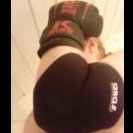switching to southpaw reasons?
-
Most Recent Topics
-
Latest Comments
-
By Kevin von Duuglas-Ittu · Posted
Here from Eugene Holland's new book, the capture and abstraction from artisanship. This is how Thailand's Muay Thai is being harvested by technique, pushed into global, deskilled commercial production. -
By Kevin von Duuglas-Ittu · Posted
Related material and thoughts, Eugene Holland on von Hayek, markets and Rule-following (Wittgenstein): -
By AandAinThailand · Posted
I'm not sure where Fani Peloumpi trains nowadays - might be that she still gives privates at MTA academy which is quite central. I would contact her on facebook, as we did. We enjoyed our privates with her. Luckily, in my experience in Thailand, the pads are held by Thai trainers who have control and no need to use strength to show off, so my main worry would be rather to avoid touristy gyms near where half the people training there are mainly concerned with getting the right shots for their social media. If you stay for one month, i would try out different gyms and see which fits best. Getting different experiences and approaches would be a plus, in my opinion, and Bangkok is like a candy store in that regard. Add to that a few privates e.g. with Namsaknoi, or any trainers at established gyms such as Sasiprapa, Petchyindee, Kaewsamrit, Eminent Air, Luktupfah.
-
-
The Latest From Open Topics Forum
-
Hi all, Does anyone know of any suppliers for blanks (Plain items to design and print a logo on) that are a good quality? Or put me in the right direction? thanks all
-
The first fight between Poot Lorlek and Posai Sittiboonlert was recently uploaded to youtube. Posai is one of the earliest great Muay Khao fighters and influential to Dieselnoi, but there's very little footage of him. Poot is one of the GOATs and one of Posai's best wins, it's really cool to see how Posai's style looked against another elite fighter.
-
By FuckedElbow-Muay · Posted
Yeah, this is certainly possible. Thanks! I just like the idea of a training camp pre-fight because of focus and getting more "locked in".. Do you know of any high level gyms in europe you would recommend? -
You could just pick a high-level gym in a European city, just live and train there for however long you want (a month?). Lots of gyms have morning and evening classes.
-
By FuckedElbow-Muay · Posted
Hi, i have a general question concerning Muay-Thai training camps, are there any serious ones in Europe at all? I know there are some for kickboxing in the Netherlands, but that's not interesting to me or what i aim for. I have found some regarding Muay-Thai in google searches, but what iv'e found seem to be only "retreats" with Muay-Thai on a level compareable to fitness-boxing, yoga or mindfullness.. So what i look for, but can't seem to find anywhere, are camps similar to those in Thailand. Grueling, high-intensity workouts with trainers who have actually fought and don't just do this as a hobby/fitness regime. A place where you can actually grow, improve technique and build strength and gas-tank with high intensity, not a vacation... No hate whatsoever to those who do fitness-boxing and attend retreats like these, i just find it VERY ODD that there ain't any training camps like those in Thailand out there, or perhaps i haven't looked good enough?.. Appericiate all responses, thank you!
-
-
Forum Statistics
-
Total Topics1.4k
-
Total Posts11.4k
-
Footer title
This content can be configured within your theme settings in your ACP. You can add any HTML including images, paragraphs and lists.
Footer title
This content can be configured within your theme settings in your ACP. You can add any HTML including images, paragraphs and lists.
Footer title
This content can be configured within your theme settings in your ACP. You can add any HTML including images, paragraphs and lists.

Recommended Posts
Create an account or sign in to comment
You need to be a member in order to leave a comment
Create an account
Sign up for a new account in our community. It's easy!
Register a new accountSign in
Already have an account? Sign in here.
Sign In Now